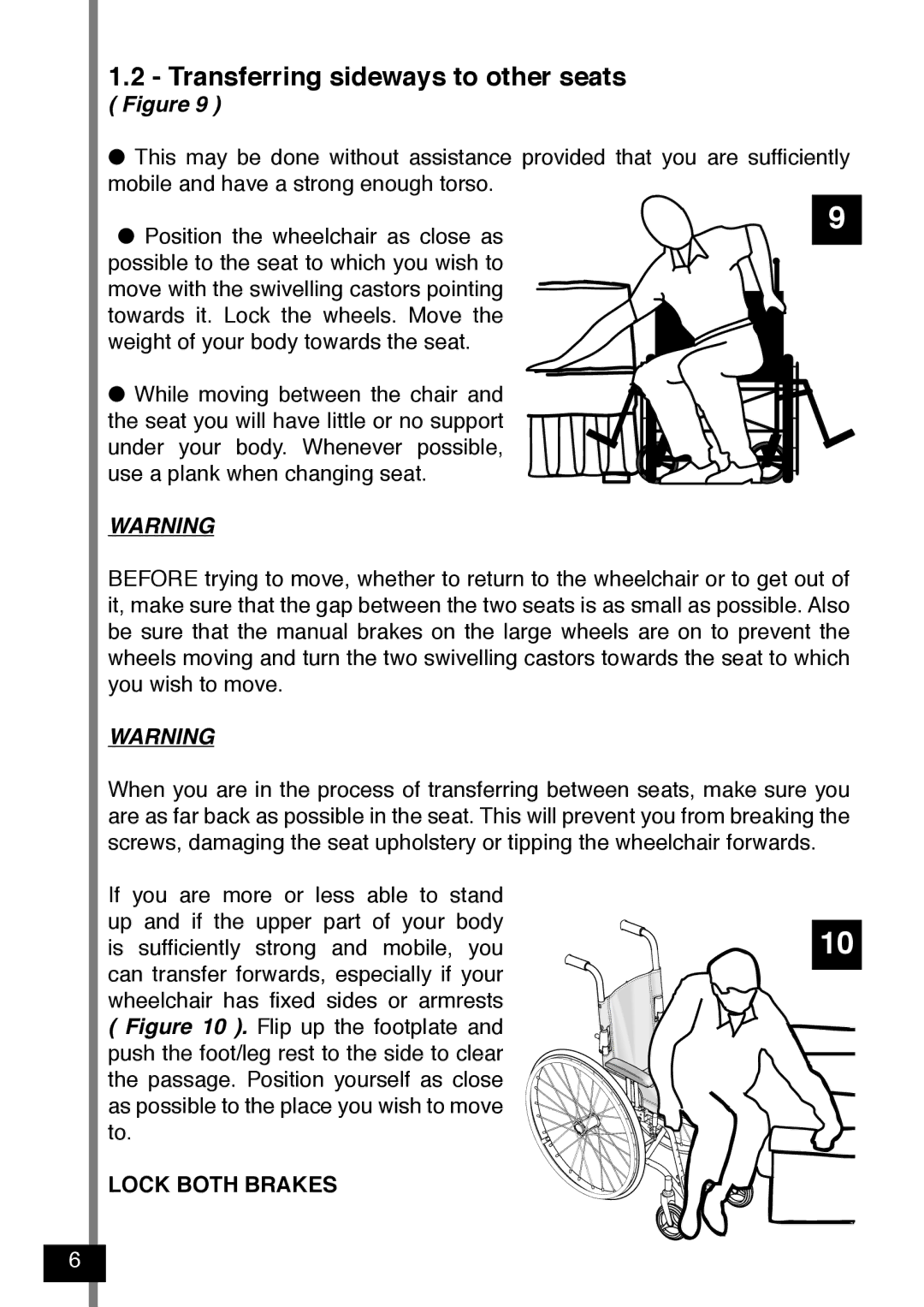
1.2 - Transferring sideways to other seats
( Figure 9 )
This may be done without assistance provided that you are sufficiently mobile and have a strong enough torso.
Position the wheelchair as close as possible to the seat to which you wish to move with the swivelling castors pointing towards it. Lock the wheels. Move the weight of your body towards the seat.
While moving between the chair and the seat you will have little or no support under your body. Whenever possible, use a plank when changing seat.
WARNING
9
BEFORE trying to move, whether to return to the wheelchair or to get out of it, make sure that the gap between the two seats is as small as possible. Also be sure that the manual brakes on the large wheels are on to prevent the wheels moving and turn the two swivelling castors towards the seat to which you wish to move.
WARNING
When you are in the process of transferring between seats, make sure you are as far back as possible in the seat. This will prevent you from breaking the screws, damaging the seat upholstery or tipping the wheelchair forwards.
If you are more or less able to stand up and if the upper part of your body is sufficiently strong and mobile, you can transfer forwards, especially if your wheelchair has fixed sides or armrests
(Figure 10 ). Flip up the footplate and push the foot/leg rest to the side to clear the passage. Position yourself as close as possible to the place you wish to move to.
LOCK BOTH BRAKES
10
6
